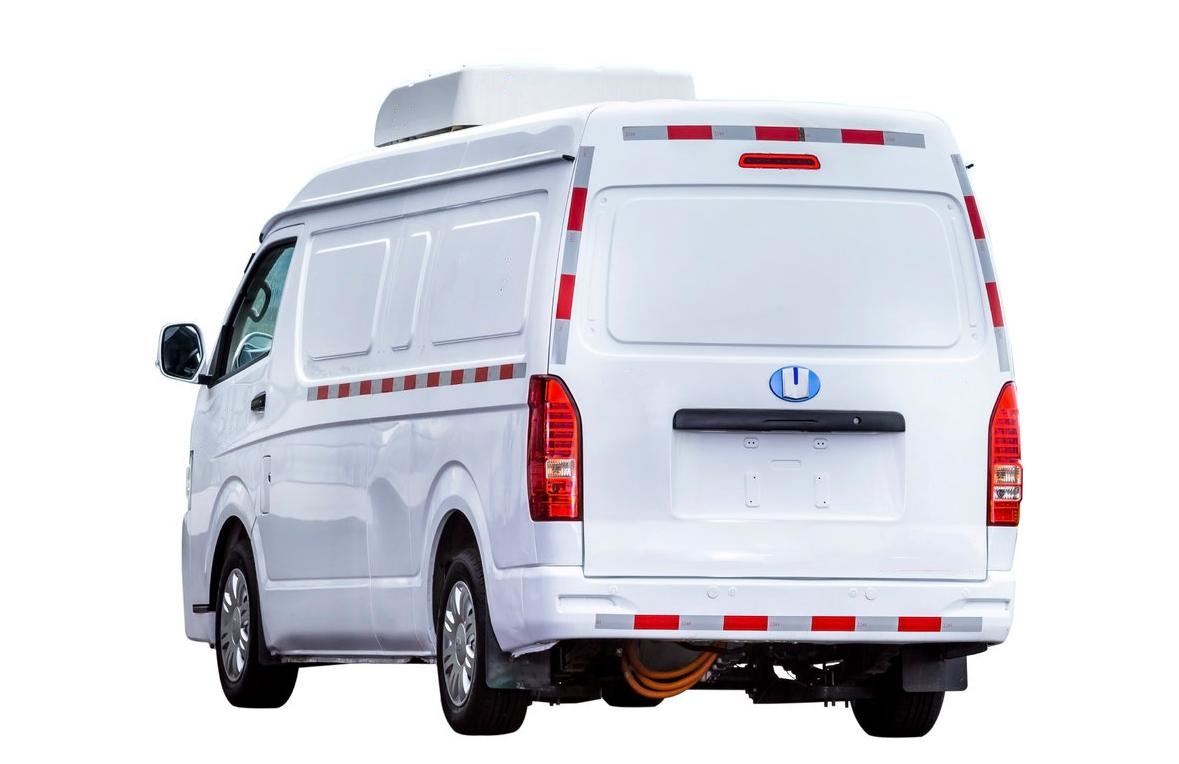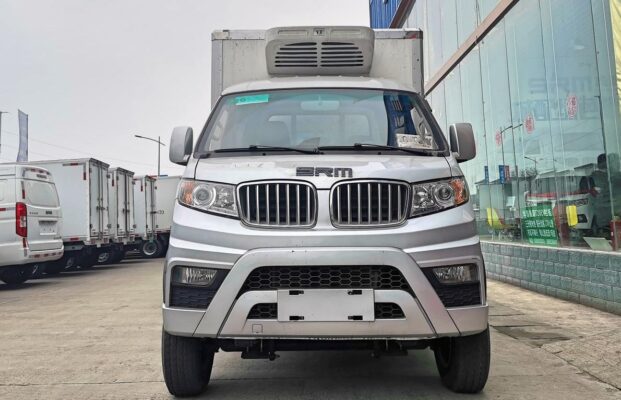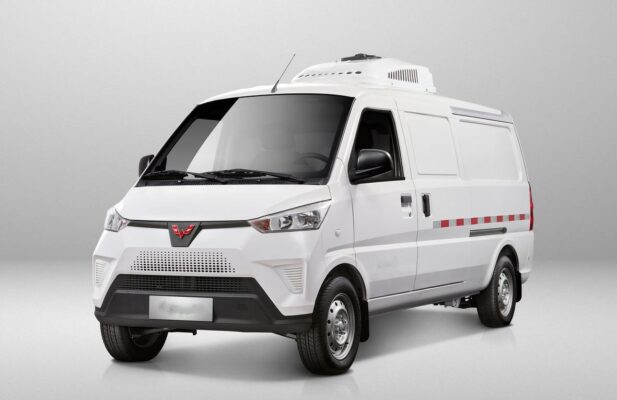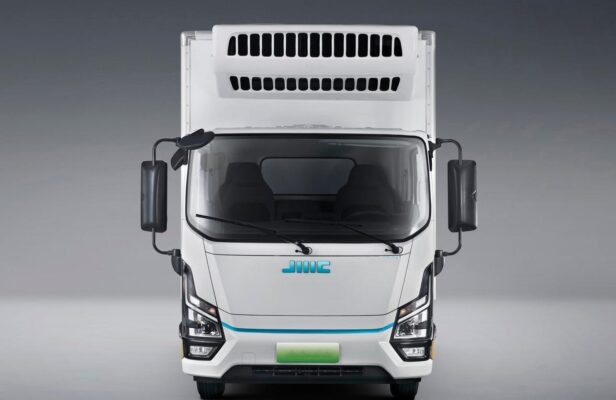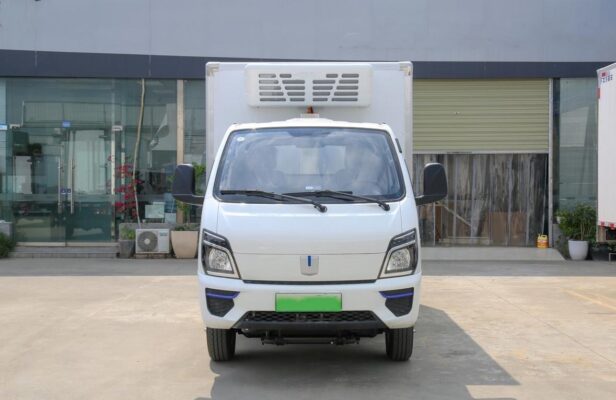Lajme për kamionët elektrikë
Why do electric trucks have so much torque?
Automjet elektrikgocë (Evs) have emerged as a powerful solution in the global shift toward cleaner and more sustainable transportation. A key factor that distinguishes EVs from traditional internal combustion engine (Akull) vehicles is their high torque, which brings multiple benefits, from improved acceleration to greater driving enjoyment. Në këtë artikull, we’ll explore the factors that give EVs their high torque capabilities, as well as the benefits, challenges, and implications of high torque for driving performance, radhit, and user experience.
1.Understanding Why Automjeti Elektriks Have High Torque
High torque is a defining characteristic of EVs, and several factors contribute to this trait.
1.1 Electric Motors and Instant Torque Delivery
Unlike internal combustion engines, which generate power through controlled explosions that rotate a crankshaft, electric motors produce torque in a more direct and efficient manner. This is because electric motors generate torque by rotating a magnetic field around the motor’s stator, creating immediate rotational force. This design allows EVs to achieve instant torque delivery from a standstill, meaning that drivers can feel the motor’s full power immediately upon pressing the accelerator.
1.2 Speed Variability and Maximum Torque at Multiple Speeds
Electric motors in EVs have adjustable speeds, allowing them to deliver high torque across various driving conditions and speeds. Në të kundërt, traditional ICE vehicles rely on a complex transmission system to adjust engine power output to the wheels. This transmission system results in a lag as the engine “revs up” to the desired speed, meaning ICE vehicles generally reach maximum torque only at higher RPMs. With EVs, however, the simplicity of electric motor mechanics means that maximum torque can be delivered instantaneously, allowing for smooth, rapid acceleration and exceptional low-speed power. This characteristic gives EVs a significant edge in acceleration performance, particularly in urban environments where frequent stopping and starting is necessary.
1.3 Battery Power Supply and Strong Current Output
The high current output capabilities of EV batteries play a crucial role in providing high torque. EVs rely on high-capacity batteries, often lithium-ion or solid-state, which can deliver strong currents on demand. This ability enables the motor to output greater power, leading to higher torque. The high energy density of modern EV batteries allows them to supply large amounts of electricity quickly and consistently, which is essential for maintaining performance during acceleration or climbing.
1.4 Simplified Transmission Systems and Direct Power Conversion
Most EVs operate without traditional transmissions, clutches, or gearboxes, which are necessary for ICE vehicles to optimize the engine’s power at different speeds. This simplicity allows EVs to convert electrical energy directly into motion, reducing mechanical losses and improving torque efficiency. Since no clutch or gearbox is required, EVs experience less power loss during energy transfer, allowing the motor to deliver power more efficiently to the wheels. This direct power conversion is a significant advantage, enabling EVs to use energy more effectively for high torque output.
1.5 Precision Control Systems for Torque Distribution
EVs use sophisticated electronic control systems that distribute torque precisely based on driving demands and road conditions. These control systems make real-time adjustments to the motor’s torque output, providing drivers with optimal traction and stability under different conditions, such as when driving on slippery or uneven terrain. This precision is especially useful for EVs with multiple motors, as it enables them to distribute torque between the front and rear axles or even among individual wheels, enhancing control and performance.
2.Benefits of High Torque in Automjeti Elektrikgocë
High torque in EVs offers multiple advantages, improving performance, siguri, and the overall driving experience.
2.1 Enhanced Acceleration and Safety
High torque improves EV acceleration performance, giving these vehicles superior burst power for quick, responsive starts. This is especially beneficial for maneuvering in urban environments and accelerating quickly when merging onto highways. The ability to rapidly reach desired speeds also enhances safety during overtaking or when navigating traffic, providing drivers with greater confidence and control.
2.2 Improved Climbing Ability and Terrain Navigation
High torque gives EVs the power needed to maintain stability and momentum when climbing steep or uneven roads. The ability to generate high torque at low speeds allows EVs to perform well on inclines, making them suitable for mountainous regions and rugged terrain. This capability also benefits drivers in areas where they encounter challenging driving conditions, providing a smoother and more reliable performance regardless of the landscape.
2.3 Enjoyable Driving Experience
EVs with high torque offer an enjoyable driving experience characterized by quick, smooth acceleration and responsive handling. Drivers can appreciate the quiet yet powerful performance, as well as the EV’s ability to navigate seamlessly through both city traffic and open highways. The ease with which EVs achieve rapid acceleration and handle curves contributes to a feeling of effortless control and comfort, enhancing overall driving satisfaction.
2.4 Energy Efficiency and Range Benefits
While high torque can require greater energy consumption, it can also improve efficiency under certain conditions. Për shembull, EVs with high torque can accelerate quickly to cruising speed, minimizing the time spent in high-power acceleration modes and conserving energy over longer distances. Për më tepër, high torque enables efficient energy use during high-speed cruising, which can help to extend range and improve the EV’s economic efficiency. High torque also helps the vehicle handle inclines without excessive energy drain, enabling longer trips without frequent recharging.
3.The Relationship Between High Torque and EV Range
The torque capabilities of an EV have a direct impact on its energy efficiency and range.
3.1 Efficiency in Energy Use
High torque enables efficient energy use by allowing the motor to deliver power more effectively, reducing energy losses during acceleration and high-speed cruising. This efficiency translates to lower overall energy consumption, enabling EVs to use their battery reserves more effectively and achieve greater distances on a single charge. High torque also allows the motor to optimize energy output for different driving situations, such as maintaining stability on inclines or adapting to various road conditions.
3.2 Reduced Energy Loss During Acceleration
High torque allows EVs to reach desired speeds more quickly, which means less time spent in acceleration phases that consume more energy. The rapid acceleration enabled by high torque reduces the duration of high-energy output, making it easier for EVs to maintain energy reserves. This efficiency contributes to greater range and supports longer trips, allowing drivers to reach destinations without frequent recharging.
3.3 Optimized High-Speed Cruising
High torque allows EVs to maintain efficient power distribution during high-speed cruising, enabling smooth and stable performance with minimal energy expenditure. By efficiently delivering power at high speeds, EVs with high torque can cover greater distances without a substantial impact on battery life. This optimized cruising efficiency is particularly advantageous for highway driving, where sustained speeds and efficient energy use are crucial for maximizing range.
4.Impact of High Torque on the Driving Experience
High torque has a transformative impact on the EV driving experience, providing benefits that go beyond traditional performance metrics.
4.1 Responsive Acceleration for Dynamic Driving
The high torque of EVs gives them a highly responsive feel, allowing drivers to accelerate quickly and easily in various traffic situations. This responsiveness is not only satisfying from a performance standpoint but also adds a level of safety and control, as drivers can swiftly adjust speeds to navigate traffic or avoid obstacles.
4.2 Improved Handling and Stability
High torque contributes to improved vehicle handling and stability, especially when driving on challenging terrain. The precision of torque distribution allows for better traction and control, helping drivers feel more secure and confident. This stability is particularly beneficial for high-performance EVs, which require precise handling for enhanced safety and performance at high speeds.
4.3 A Smoother and More Comfortable Ride
The instant power delivery enabled by high torque results in a smoother, more comfortable driving experience. EVs with high torque avoid the “jerkiness” often associated with traditional transmissions and clutches, offering seamless acceleration and deceleration. This smoothness reduces driver fatigue and enhances passenger comfort, making EVs well-suited for both short city commutes and long-distance journeys.
5.Potential Downsides of High Torque in Electric Vehicles
While high torque provides many advantages, it can also present some challenges and trade-offs.
5.1 Increased Energy Consumption
High torque output can result in higher energy consumption, particularly if the EV is frequently operated at maximum torque levels. Për shembull, aggressive acceleration or sustained high speeds may drain the battery more quickly, reducing the vehicle’s overall range. Although modern EVs are designed to optimize torque distribution, the demand for instant power can still impact energy efficiency under certain conditions.
5.2 Greater Strain on Suspension and Transmission Systems
Higher torque output places additional demands on suspension and transmission components, which may require reinforced materials and designs to handle the added power. This need for more robust components can increase manufacturing costs, potentially making high-torque EVs more expensive. Vehicle designers must account for these demands by engineering suspension systems that can handle the intense forces generated by high torque, ensuring durability and performance.
5.3 Learning Curve for New Drivers
Drivers new to EVs may need to adjust to the high torque characteristics, particularly the quick and powerful acceleration response. EVs can feel different from traditional ICE vehicles, and drivers may require time to adapt to their unique handling and power delivery. Manufacturers often include adjustable driving modes to help drivers manage high torque more comfortably, but the learning curve may still be a consideration for those unfamiliar with EVs.

Si përfundim, high torque is one of the defining characteristics of automjeti elektrikgocë, enhancing performance, radhit, and the driving experience. This torque advantage is made possible by the unique properties of electric motors, high-capacity batteries, and advanced electronic control systems, which together enable EVs to deliver instant power and smooth acceleration. While there are challenges associated with high torque, such as potential energy consumption and increased strain on components, the benefits in terms of safety, rehati, and driving enjoyment make it a valuable asset in EV design.
